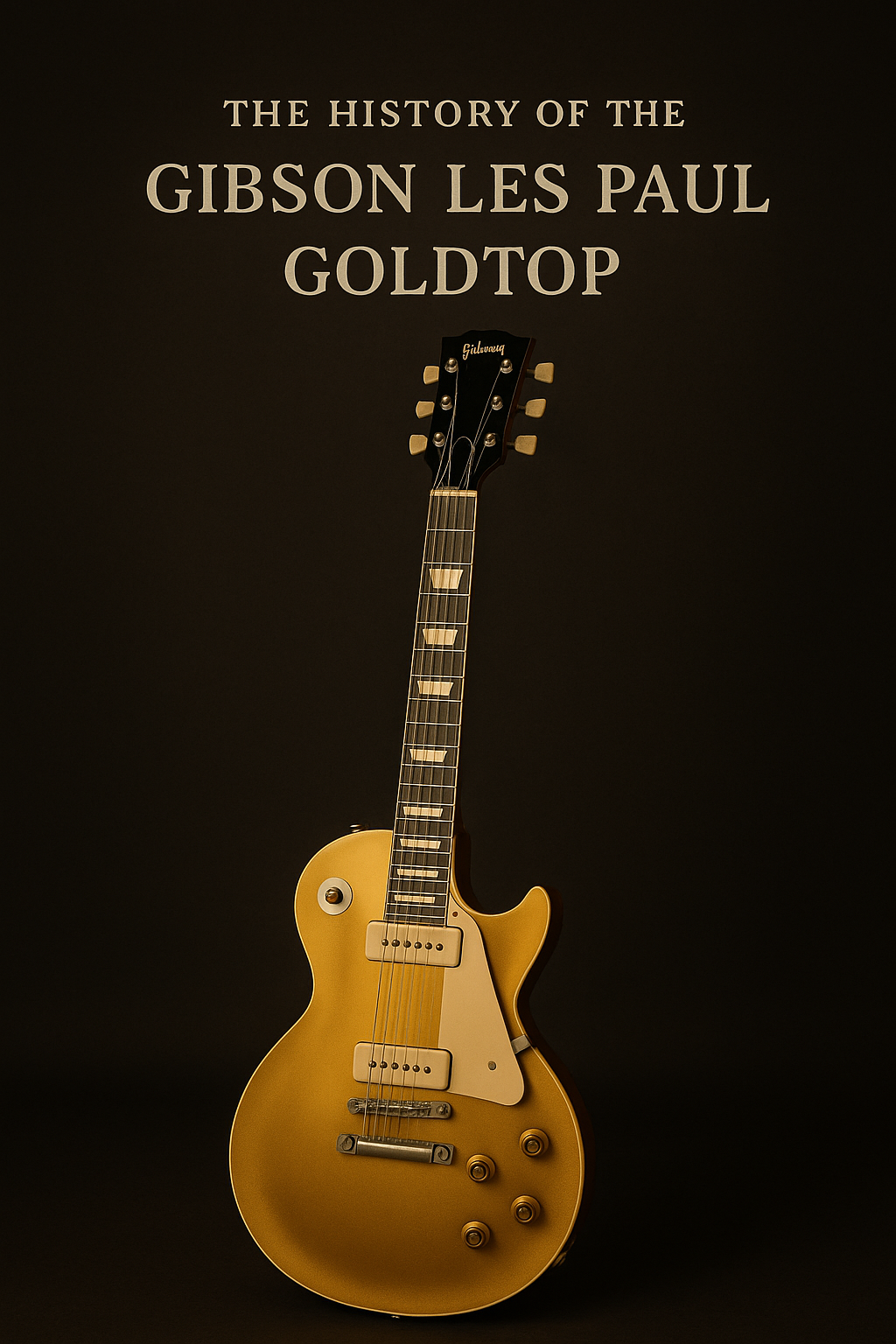The Gibson Les Paul Goldtop is more than just a guitar — it’s a symbol of electric guitar history. Its iconic metallic gold finish, warm tone, and pioneering design have made it one of the most revered instruments in music. From its humble beginnings in the early 1950s to its reissue in the late 1960s and its lasting legacy today, the Goldtop’s story is a journey through the evolution of rock, blues, and beyond.
The Birth of the Goldtop – 1952
In 1952, Gibson launched its first solid-body electric guitar — the Les Paul Model — named after the legendary guitarist and inventor Les Paul. The original design featured a carved maple top over a mahogany body, a set neck, and a distinctive metallic gold finish, which would give the model its enduring nickname: the Goldtop.
The earliest models (1952–1953) came with P-90 single-coil pickups and a trapeze tailpiece with underwrap strings. These tailpieces proved unpopular due to their awkward stringing and limited sustain. By 1954, the Goldtop received a significant upgrade with a wraparound bridge, greatly improving tone and playability.
The Tune-o-Matic Era – 1955–1957
In 1955, Gibson introduced the Tune-o-Matic bridge paired with a separate stopbar tailpiece, creating the configuration that would become a Les Paul hallmark. This not only improved intonation but also marked the refinement of the Goldtop’s now-classic design.
The biggest shift came in 1957, when Gibson swapped out the P-90s for their newly developed PAF (Patent Applied For) humbucking pickups. Designed by Seth Lover, these pickups offered fatter tone and reduced hum — perfect for the rising tide of blues and rock guitarists seeking more output and warmth.
Discontinuation and the Rise of the Sunburst – 1958
In 1958, the Goldtop was discontinued in favor of the now-fabled Les Paul Standard, which featured the same specs but introduced a cherry sunburst finish to show off the flame maple tops. As a result, Goldtops with humbuckers from 1957 became a rare breed — and among the most collectible vintage guitars today.
The Les Paul Revival – Late 1960s
Although the Les Paul shape was briefly discontinued in favor of the SG-style Les Paul from 1961–1963, a resurgence of interest sparked by players like Eric Clapton, Mike Bloomfield, and Keith Richards led Gibson to reissue the original single-cutaway Les Paul design in 1968. Among these reissued models was the Goldtop, which returned with P-90 pickups, Tune-o-Matic bridge, and a slightly different neck carve.
These late-’60s Goldtops (especially 1968–1969) are highly regarded for their quality and similarity to the ‘50s models, with many even featuring one-piece mahogany necks and bodies, long tenon neck joints, and thin nitrocellulose finishes.
1970s and the Norlin Era
Through the ’70s, Gibson continued to offer Goldtops in various forms, although the Norlin ownership era introduced heavier bodies, multi-piece necks, and volute headstocks. Many Goldtops from this time used mini-humbuckers or standard humbuckers, often with maple necks — a departure from the classic 1950s spec, but still loved by many for their unique tone.
Modern Reissues and Custom Shop Models
In the 1990s and 2000s, Gibson began producing Custom Shop reissues of the 1954, 1956, and 1957 Goldtops with stunning accuracy — right down to the plastics, finish, and wiring. These Historic Series instruments, such as the R4, R6, and R7, became go-to guitars for vintage purists and touring professionals alike.
Gibson’s Murphy Lab and Collector’s Choice lines have taken this even further, recreating specific famous vintage Goldtops with meticulous aging and detailing.
Famous Goldtop Players
-
Duane Allman – Known for playing a 1957 Goldtop before switching to a sunburst.
-
Joe Bonamassa – Owns several vintage Goldtops and often tours with reissues.
-
Neil Young – Famously used a Goldtop with a Bigsby in the early Buffalo Springfield days.
Conclusion
From its innovative start in 1952 to its renaissance in the late ‘60s and revered status today, the Gibson Les Paul Goldtop is more than just a guitar — it’s a legacy. Whether it’s a worn ‘50s original or a modern Custom Shop masterpiece, the Goldtop continues to inspire guitarists across genres with its timeless tone, stunning looks, and unmistakable mojo.









